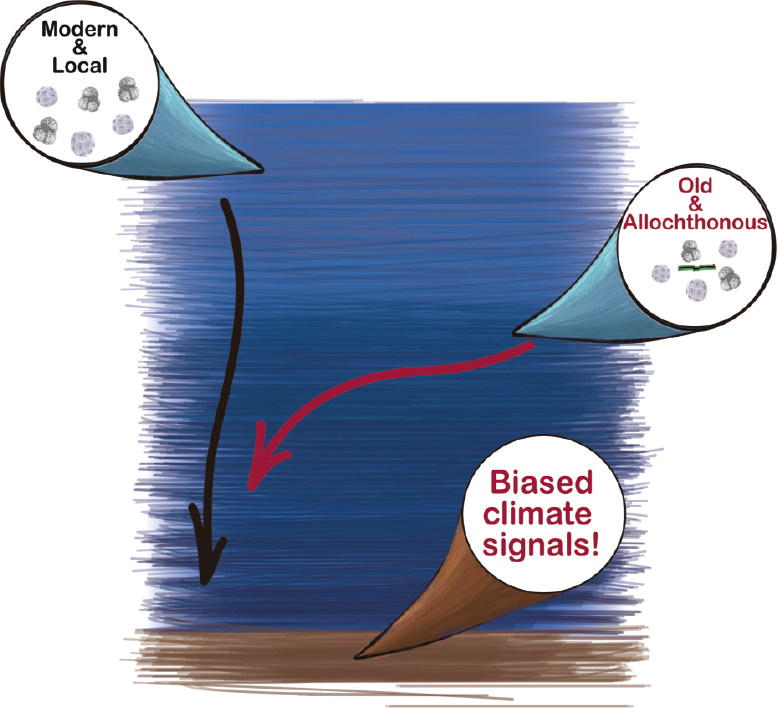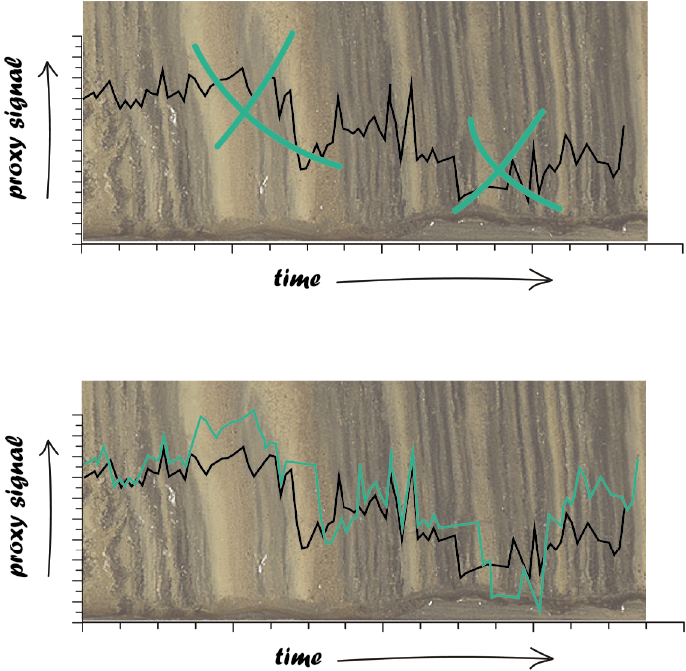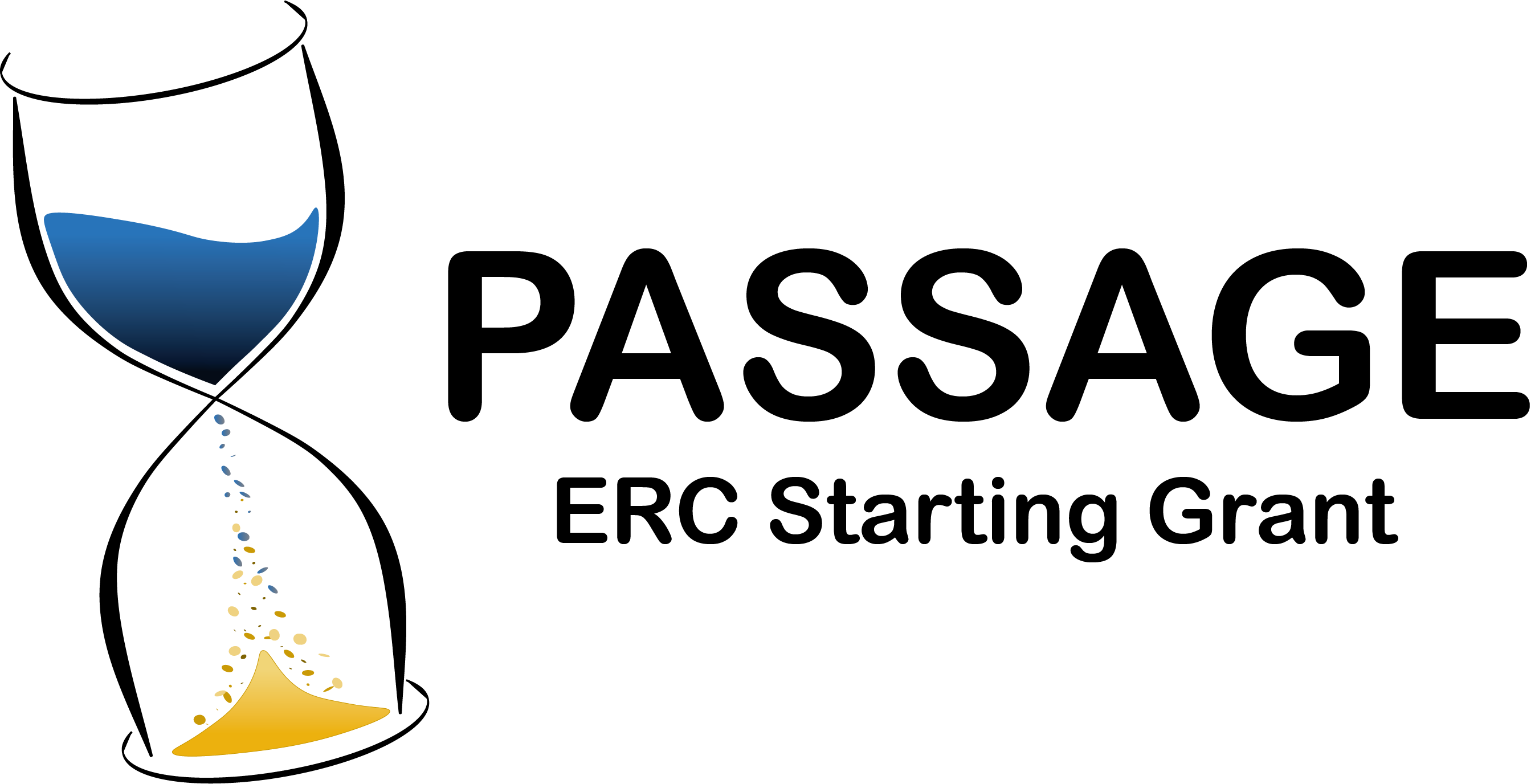Rationale

Understanding the nature and pace of climate change in the future requires robust and accurate information on past Earth’s climate changes. Much of what we know about past short-term climate variability stems from marine sediment sequences, whose sedimentary components provide an ever-expanding array of paleoclimatic proxies. The fundamental assumption underlying most paleoceanographic investigations is that the environmental signal encapsulated in marine sedimentary components reflects that of the overlying water column at the time of formation. However, evidence indicates asynchronous synthesis and transport from distal locations for co-deposited sediment constituents. Consequently, fundamental questions arise regarding the fidelity of paleoclimate records. Moreover, the magnitude of such temporal and spatial offsets likely varies in concert with hydrographic – and associated hydrodynamic – changes.
Given these limitations, two crucial knowledge gaps become apparent:
i) a comprehensive understanding of the influence of transport modes on the entrainment and deposition of allochthonous marine particulate material
ii) quantitative constraints on the impact of marine particle translocation on derived proxy signals.
Research Questions
-
Q.1
What is the contribution and age structure of remote- versus locally-sourced marine particles to water column and sediment composition? This question is pertinent considering the magnitude of the observed 14 C age offsets in surface and down-core marine sediments.
-
Q. 2
What are the provenances and dominant transport pathways of allochthonous and/or asynchronous material? This is a critical first-order question because translocated particles carry foreign signals that are often interpreted as local.
-
Q 3
Does the magnitude of 14 C age discrepancies among grain-size fractions provide a proxy for past hydrodynamic changes? This question is pertinent because OC 14 C-age discrepancies among size fractions potentially provides a quantitative proxy for hydrodynamic conditions. The answer is vital for correct interpretation of paleoclimate records across time spans characterized by large hydrodynamic changes (eg, abrupt climate events of the last deglaciation).
-
Q.4
To which extent does entrainment of remotely sourced and/or asynchronous material bias locally derived proxy-signals from marine sediments? In light of our recent observations, signals embedded in marine sediments are biased due to the contribution of old/allochthonous material.
-
Q.5
What can be said about existing paleoceanographic reconstructions for the SW Iberian margin and other strategic locations for paleoclimate research? Although the emphasis of this project will be placed on processes occurring in the water column and on the SW Iberian margin, much can be learned from combining the derived new knowledge with ancillary data and existing information from the water column and sediments from other regions.
Overarching Goals
To quantify the impact of hydrodynamic processes on the fate of marine proxy carriers and the fidelity of derived signals
To implement approaches to identify and account for potential biases in paleoclimate reconstructions.

